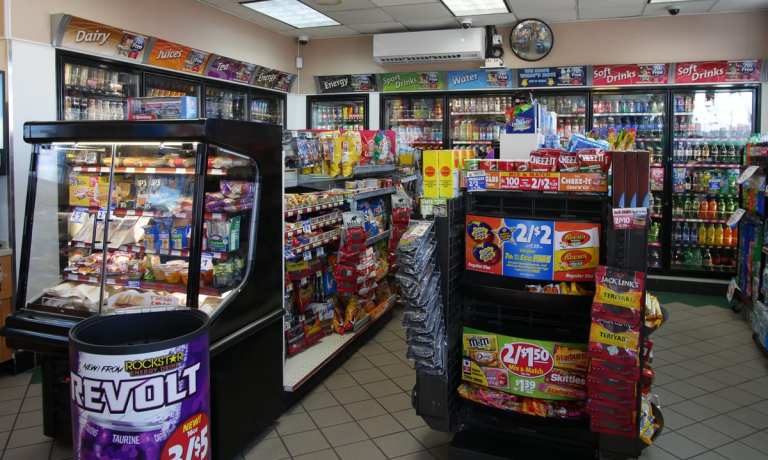
By the numbers, convenience stores are America’s gas stations.
They account for 63.7 percent of all gasoline sold in the country, and 80 percent of them combine the food staples they’re well known for with the pumps for the business they’ve come to dominate. But the simplicity ends there. For convenience store chains and independents, fuel is a razor-thin business. But it’s also a gateway to the more profitable product categories sold inside.
As such, fuel is the focus for a lot of different stakeholders in the payments and commerce business. As Bobby Koscheski, head of omnicommerce, fuel and convenience store solutions at ACI Worldwide, told PYMNTS, fuel is an important element in omnichannel efforts and loyalty programs that can boost merchants’ bottom lines. The discussion came as current low margins on fuel are prompting convenience stores to find new ways to incent customers to make purchases beyond the pump — think bread, milk, soda and the like — moving commerce from simply getting gas to filling the proverbial basket.
It’s a sizable opportunity, as stated in the aforementioned data. It also represents a chance for convenience stores to embrace advanced payments technology and contactless payments, which have been accelerated by the pandemic.
“Because of COVID-19, everybody aims to avoid buying in store as much as possible, or if buying in store to avoid touching devices, items, etc. (e.g., the dispenser), touch the terminal in the store — or even be near people,” Koscheski said. “This shift has really elevated the awareness among customers of digital services.”
At a high level, Koscheski said, consumers are expecting the same kind of experience at a convenience store that they can get online or with a mobile app. They also expect to be rewarded for those purchases immediately, he said. Drilling down into the payments themselves, he said, for ACI in particular, the intersection of payments and loyalty demand real-time authorizations 24/7, with quick response times. Given the different pathways of commerce at the pump and at the convenience store, he said — people may fuel first and then decide they need a loaf of bread or gum, or vice versa — the integrated experience is crucial.
We see a great uptake, he said, in fuel companies and convenience stores upgrading their apps to allow for buy online, pickup in store (BOPIS) or curbside delivery options. Some operators, he said, are allowing for pay at the pump (for convenience store items) with delivery to the dispenser. These blends of commerce help convenience store operators supplement their margins.
Loyalty As Part Of The Process
In all of those experiences, loyalty is part of the process, Koscheski explained.
“You get your discount automatically at your pump for your price. You get a receipt at the end, and it tells you how many points you earned,” he said — which in turn can spur more transactions within the same visit.
Loyalty programs have to get consumers to opt in, of course, and the more robust an app (and the loyalty program tied to it) is, the more likely it is that convenience stores will see repeat business.
Koscheski pointed to a program with a mobile app geared toward truckers, which at one point only let drivers make reservations for parking spaces. But linking the app into their loyalty system and payment systems induced those drivers (with attendant rewards, such as, say, a free shower — a boon to long haulers) to buy hundreds of dollars’ worth of diesel at a competitor just down the road.
Data matter, of course, and Koscheski stated that offering rewards in a contextual way in real time is happening one step at a time.
“What’s happening is that the C-stores, historically, have viewed the fuel pump as sort of this separate thing,” he said. “And in fact, from an architecture point of view, it isn’t even ‘invited’ into the rest of the applications in the store. In other words, they have really old technology on those dispensers.”
But upgrades are bringing those pumps more fully into the flow of commerce. Convenience store owners, spurred by the looming EMV liability shift (the deadline is April of this year), have been making the investments necessary in the dispensers to accept smart cards, for example, and enable higher speed communications (through better data connections) to enable omnichannel experiences.
Operators are also embracing technologies, such as point-to-point encryption that make sure card data remain secure (through tokenization). Tokenization, Koscheski said, gives the merchant the ability to store that data safely and use it for subsequent transactions. Ninety-seven percent of the upgrades should be completed in the next few months.
“You’ve got to be able to take friction out of the overarching experience that the customer has, and it doesn’t matter whether they drive up and go into the store as they have for 30 years, whether they insert their card, earn points in the store, earn points at the pump,” or pay with their mobile devices, Koscheski told PYMNTS. “They just want convenience. They want the ability to shop and buy and make it really convenient.”